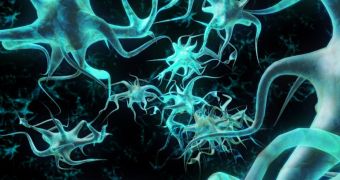Nanotechnology could now perform what was regarded before as a miracle: nerve regenerating.
As a first approach at the University of Miami, magnetic nanoparticles (MNPs) were used to build mechanical tension that enhanced the growth and elongation of axons of the central nervous system neurons.
The second approach at the University of California, Berkeley used aligned nanofibers containing one or more growth factors to offer a bioactive matrix where nerve cells can regrow.
Injured neurons in the central nervous system (CNS) lack the ability to regenerate and this is linked to glia cells thought to make an inhibitory environment for growth after injury.
"By providing mechanical tension to the regrowing axon, we may be able to enhance the regenerative axon growth in vivo" said Dr. Mauris N. De Silva of the University of Miami.
This could overpass the inhibitory interface and the tissue beyond a CNS injury. De Silva's team is currently investigating on optic nerve and spinal cord tissue how these magnetic nanoparticles can be inserted into neurons and axons at the site of injury, with huge implications in the treatment of spinal cord injuries, responsible for most paralysis cases.
The second study concerns peripheral nerve injury, encountered in 2.8% of all trauma patients and provoking lifelong sensory disability and paralysis; in US alone over 300,000 individuals are affected annually by this.
Severed nerves can regrow over the injury gap to their end goals (skin or muscle), but it can do it over gaps larger than a few mm. A current treatment is the autograft: a section of healthy nerves from another part of the patient's body is inserted to the damaged one.
But the autograft has its side effects, like the loss of function at the donor site and requires multiple surgeries and in many cases, there is not a suitable nerve to use as a graft. Synthetic nerve grafts are not so efficient as the autograft and can't serve for gaps larger than 4 cm (1.5 inch).
The study at the University of California, Berkeley uses graft materials made of aligned nanoscale polymer fibers, working like physical guides for regenerating nerve fibers and that could be much more effective. The technique has been tested on culturing rat nerve tissue ex vivo. The new grown nerve fibers had a similar orientation as the nanofibers. Some added biochemicals boosted the nanofibers growth by 5 fold. Nerve fibers grew with 4 mm in 5 days in a bipolar fashion.
"Speed is the key to successful nerve regeneration. Our aligned nanofiber technology takes full advantage of the fact that the shortest distance between damaged nerve endings is a straight line. It directs straightforward nerve growth and never lets them stray from the fast lane." said lead researcher Shyam Patel.

 14 DAY TRIAL //
14 DAY TRIAL //